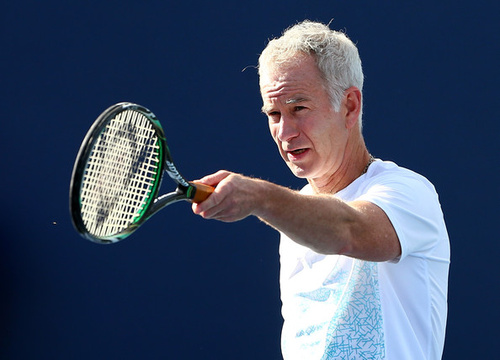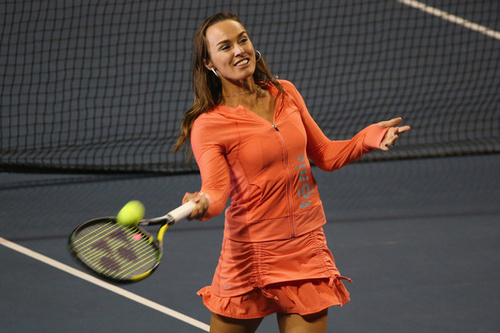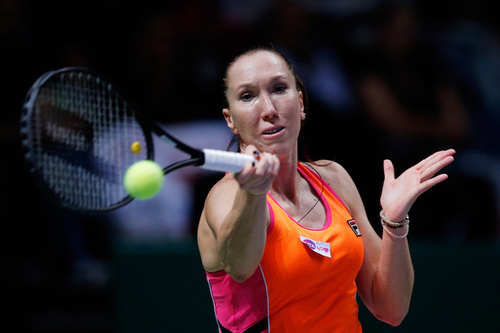Don't miss any stories → Follow Tennis View
FollowDouble the Trouble, or Double the Fun? Viewpoint on the Status of Doubles
The tennis offseason typically does not lend itself to major headlines. John McEnroe, no stranger to controversy, bucked that trend in 2013. The former great raised more than a few eyebrows when he dismissed the game of doubles as it stands in the sport today.

“Why we are even playing doubles at this point is a mystery to me,” McEnroe stated. He further suggested, “Most doubles players, I hate to say, are the slow guys who were not quick enough to play singles.” He even argued, “If you cut out doubles and gave that money to singles players ranked between 200 and 1,000 , maybe that would do something for the game.”
If it were now early spring, one might think these comments were all part of some colossal April Fool’s joke. Could McEnroe, one of the greatest doubles players of all time, really be saying such things? Still others might have thought that McEnroe was not really serious and instead was merely stirring the pot. He was finding a way to put doubles in the spotlight and get a number of fans and pundits to rally to its cause and sing its virtues. But John McEnroe rarely says what he does not mean, and in this case, he does raise some valid points.
There is no denying that the doubles game of today is vastly different from the doubles game of just a couple of decades ago. The format alone has seen to that. Doubles matches are rarely played out to a full best-of-three or best-of-five sets, with a champion’s tiebreak now used in lieu of that final set. In some ways, the shorter format provides less margin for error, but it also means that it is less taxing. Thus, this change has caused some observers to feel that the new format cheapens the accomplishments of the best doubles players today.
Of course, the reason for the format change stems from the need to entice more top singles players to also compete in doubles. The absence of star singles players is another reason why some view the accomplishments of the current crop of doubles duos in a different – and less distinguished – light than those successful tandems of the past. During McEnroe’s era and those preceding his, a number of the top-ranked singles players also competed in doubles. In many ways, this made the doubles arena equally as challenging as the singles.

That is hardly the case today. The WTA has fared slightly better than the ATP in getting its top stars to more consistently play doubles and singles, with relatively recent players like Martina Hingis and Lindsay Davenport achieving the top ranking in both during the course of their professional careers. But that is nowhere near the norm, and both Tours are unlikely to see that trend reverse any time soon.
The reason why so few singles players also compete in doubles is twofold. For one, financially, there is not the same level of incentive to compete in both. Prize money may not be increasing to the same levels or with the same frequency as many players would like, but the prize purses in singles are much larger than they were 20 or more years ago. Furthermore, the top singles players are making a mint in off-court endorsements. With both of these factors in their favor, there is hardly the need for players to supplement their earnings by putting in the hard yards on the doubles court.
The nature of the sport also makes the doubles game less enticing for singles players. Where once serve-and-volleyers were a-dime-a-dozen, there are primarily all baseliners now. The grass season has become very short with most tournaments now contested on clay or hard courts. Both factors translate to longer and more grueling rallies. Racquet technology has also contributed to turning the game into a baseline endurance contest, meaning that the sport has become more physical than ever. Players are unlikely to want to exert any extra effort playing doubles when they know that they now need to conserve their energy more than ever if they wish to succeed in singles.
All of these are factors that are unlikely to change any time soon, if at all. Yet despite this reality, McEnroe goes too far in hinting that there is no place for doubles in the modern game. On the contrary, it still has something to offer to both players and the fans.
McEnroe suggested ditching the money used on doubles to help singles players. He argued that the money could help a player who might have otherwise quit early with a ranking of No. 400 play a full career with a ranking that tops out around No. 100. No offense to any journeyman who spends the entirety of his or her career ranked around No. 100, which is very respectable all things considered. But is that player any more deserving of the prize money in question than those competitors who reach the upper echelons in doubles?
To argue that would be to undervalue the skill set that the best doubles players possess. Many exhibit some of the quickest hands, the most delicate touch, and the fastest forecourt reflexes in the game, singles or doubles. They often showcase aspects of the sport that are not frequently seen in today’s modern baseline singles game, which can also be much more enthralling to fans than watching two journeymen duke it out for a place in the second round of a tournament.

The opportunity that doubles provides to breed and build better singles players is another aspect that cannot be ignored. Jelena Jankovic enjoyed a kind of resurgence in 2013, part of which can be contributed to her improved ability to move forward and be more effective in the forecourt. This would have been difficult to achieve had she only had her singles play to hone those skills, but by playing doubles, she was able to improve and grow in confidence more quickly. Svetlana Kuznetsova is another success story. She enjoyed some of her best early results in doubles, benefiting from the wisdom of her partner, Martina Navratilova, an outstanding singles and doubles player during her own career. The experience that Kuznetsova gained through doubles helped make her an all-court player that saw her win two singles titles at majors.
Naturally, these virtues do not justify putting doubles on equal footing with singles by any stretch. There is also no denying that doubles has become less relevant in recent years, and it has had to adapt in order to survive. But doubles is hardly a relic of the past. It still has meaning. It still has a purpose. It may have become a secondary component of the sport, but that does not mean that it is not an important one.










